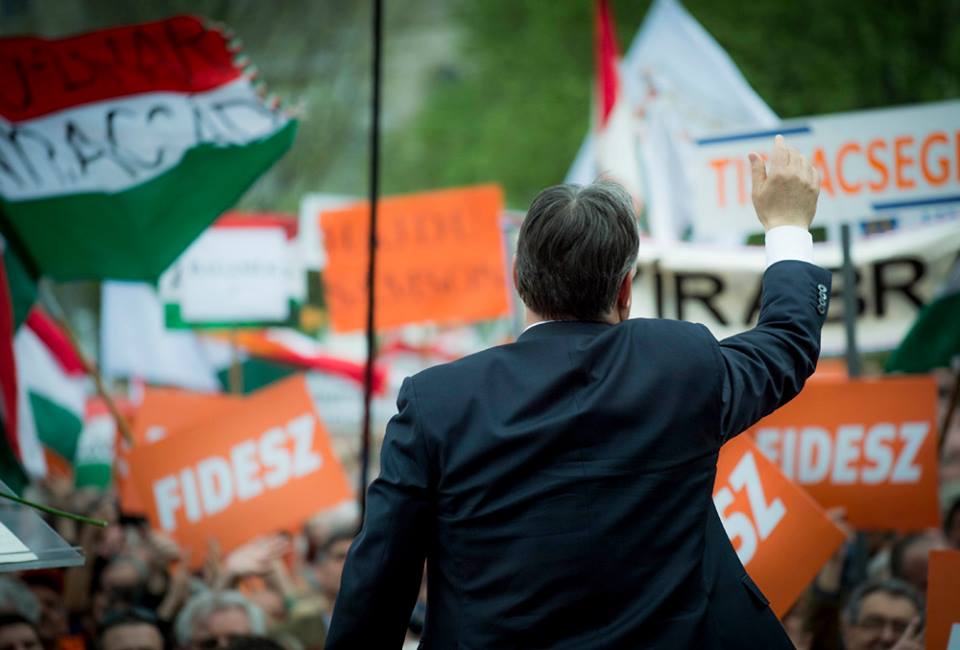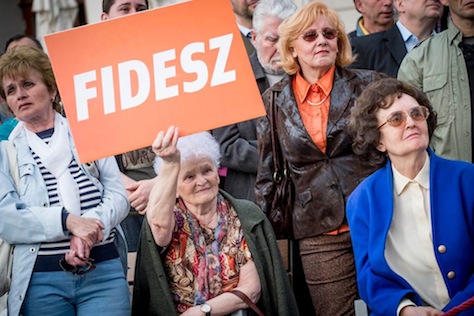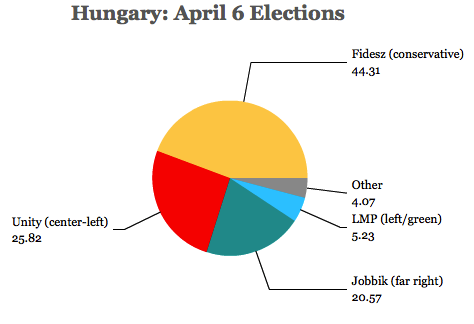Guest post by Dániel Kiss
Last Sunday Hungary had a paradoxical election. Politicians and commentators had forecast that this vote would set the future direction of the country. It would determine whether prime minister Viktor Orbán and his nationalistic party Fidesz – Magyar Polgári Szövetség (Fidesz – Hungarian Civic Alliance), would be able to strengthen their hold on power, or the leftist opposition would run Hungary according to more mainstream ideals of capitalism and liberal democracy. In fact the election turned out to be something of a flop, with only 61.2% of the electorate casting their vote. Only one parliamentary election in the country saw a lower rate of participation since democracy was restored in 1989.![]()
The results too were paradoxical. Opinion polls had forecast a major victory for Fidesz. Some commentators had chosen to disbelieve them, as they thought that a significant number of voters would not feel free to say that they would be voting against a party that is known to have punished its opponents. In fact the polls turned out to be correct, and Fidesz won by a broad margin. It is not yet clear exactly how many seats they will win, as some votes (including those of Hungarians living abroad) still have to be counted four days after the election. However, it is likely that they will take 133 of the 199 seats in parliament, or just over two-thirds of the total. That means that they will hold on not only to power, but also to their supermajority of two-thirds of the seats. This supermajority has enabled them to change every law of the country since 2010, and to enact a new constitution that came into power in 2012. The left-wing opposition have not only failed to bring down Orbán’s government, which had been their aim at the election, but they have barely dented his majority in parliament. Orbán celebrated what he called “a victory that shook the sky”.
In fact the results are less favourable for him than they might appear, and they hold risks for all parties concerned. In the previous parliamentary elections of 2010, Fidesz won 52.7% of the national vote. This time the party only won 44.3%, according to the most recent figures, despite the strong support of ethnic Hungarians living abroad, who were enfranchised by Fidesz in 2011. The left-wing opposition coalition, consisting of the Magyar Szocialista Párt (MSzP, Hungarian Socialist Party) and four recently founded small parties, won 26.2%, which is significantly better than the 19.3% won by the Socialists in 2010. The other large force opposing Fidesz, the far-right-wing Jobbik Magyarországért Mozgalom (Jobbik), also increased its share of the national vote from 16.7% to 20.7%, while the green liberal party Lehet Más a Politika (LMP, ‘Politics Can Be Different’) saw its share fall from 7.5% to 5.3%, which is just above the threshold of 5% that is required to send deputies into parliament from the national list. Still, this is not a bad result, given that LMP split in 2013 and a number of its deputies founded one of the parties that has allied itself with the socialists.
The success of Fidesz can partly be explained by the continuing appeal to voters of its combination of nationalistic rhetoric with anti-market, statist policies. The party also managed to outmaneuver the Socialists in the run-up to the elections. The Fidesz government forced utility companies to lower their tariffs to private consumers twice by 10%, which met with considerable approval in a country where many people struggle to make ends meet. Continue reading Lessons from Hungary’s election — and challenges for its future




